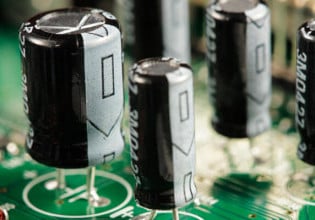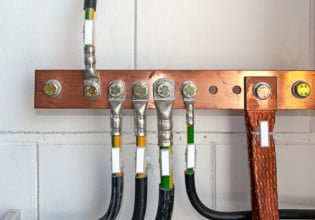ABB Survey Shows Data Center Professionals Look to Power System Upgrades in 2021
A new survey from ABB has revealed a new trend showing data center professionals are considering power system upgrades to meet increased demand.
“Data Overload: Powering Data Centers in the New Normal,” was first published at the end of January. This research was based on answers from 150 U.S.-based data center professionals.
The Data Overload report cover. Image used courtesy of ABB.
What is a Data Center?
Organizations need several infrastructures to handle and process data. These operations typically take place in structures called data centers.
These physical facilities, often also referred to as server farms, are designed to house and connect critical data and applications, and are based on networks of computing and storage resources.
Computing devices utilized in data centers are several and diversified, but traditionally include routers, switches, storage systems, firewalls, and servers.
Thanks to these machines, data centers can provide a number of services, including data storage, backup and recovery, data management, and networking. Because they are entrusted with the housing handling of organizations’ critical and proprietary assets, these infrastructures need to comply with several security and safety protocols.
Powering Data Centers
Power management is an essential aspect of running data centers. In fact, beyond various technical equipment specializing in data handling, server farms need to be kept up and running while performing data-intensive operations.
Because of this, the deployment of power subsystems, uninterruptible power supplies (UPS), ventilation, and cooling systems is paramount, as well as the presence of backup generators and cables to connect to external network operators.
The ratio of power used by a data center compared to the actual power delivered to a computing device is usually referred to as power usage effectiveness (PUE). The number shows that the total infrastructure power is the total power entering a data center, which is then measured at the utility meter in kilowatts.
According to Federal CIO targets and benchmarks, ideal target values for an existing data center should be 1.5 or less.
Meeting Increasing Power Demands
ABB’s new research now claims that data center power demands have grown substantially in 2020, mostly due to the shift to remote working caused by the pandemic.
The document mentions a report from EIA showing a 40% of global internet traffic increase between February and mid-April 2020 caused by a rapid increase in cloud-based applications.
This translated to 96% of data center professionals surveyed by ABB reporting that demand on their data centers had increased during 2020, particularly fueled by financial services, machine-to-machine interactions (IoT), and telecom connectivity.
Additional power demands on data centers were imposed by social networking, government applications, and entertainment.
Data from the Data Overload report. Image used courtesy of ABB.
To keep up with increasing power demands, 52% of data center professionals participating in the ABB study said they would consider a distributed DC power architecture.
This type of architecture improves power distribution efficiency by reducing the number of voltage conversions typically required and by placing critical battery reserves near the physical computing equipment.
It is also scalable at the cabinet level, allowing individual cabinets to be fed directly from the utility, and consequently improving the utilization of white space that may otherwise be stranded when a centralized UPS reaches its capacity limit.
For more information about the Data Overload report, you can follow this link here.






